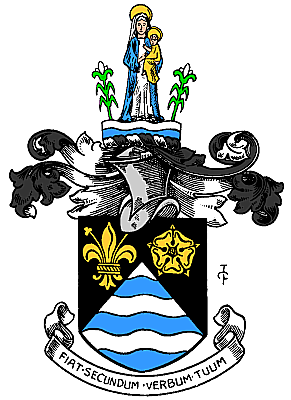Marylebone
Marylebone is an affluent inner-city area of Central London, located within the City of Westminster. It is bounded by Oxford Street to the south, Marylebone Road to the north, Edgware Road to the west, and Great Portland Street to the east. The area is known for its historical associations, architectural landmarks, and vibrant cultural scene.
History[edit | edit source]
The history of Marylebone dates back to the early Roman period, but it began to develop significantly in the 18th century. The name "Marylebone" derives from a church dedicated to St Mary, represented by the original St Mary's Church (Marylebone), and the bourne, an old English word for a brook or stream, referring to the Tyburn which ran south of the area.
In the 18th century, Marylebone became a fashionable area for the wealthy, and many grand Georgian houses were built. The development of the area was largely due to the efforts of the Portman Estate and the Howard de Walden Estate, which still own much of the land.
Geography[edit | edit source]
Marylebone is characterized by its garden squares, Georgian terraces, and high-end shops and restaurants. The area's main thoroughfare is Marylebone High Street, known for its boutique stores, cafes, and local charm, contrasting with the nearby commercial hub of Oxford Street.
Landmarks and Attractions[edit | edit source]
Marylebone is home to several notable landmarks and attractions:
- Madame Tussauds: The famous wax museum, located on Marylebone Road, attracts tourists from around the world.
- The Wallace Collection: A museum in Manchester Square, housing an extensive collection of fine and decorative arts.
- Regent's Park: One of London's Royal Parks, bordering Marylebone to the north, offering open spaces, sports facilities, and the London Zoo.
- Baker Street: Famous for its association with the fictional detective Sherlock Holmes, and the location of the Sherlock Holmes Museum.
Transport[edit | edit source]
Marylebone is well served by public transport, including the Marylebone station, which provides national railway services and access to the London Underground. Several bus routes also operate in the area, facilitating easy access to other parts of London.
Education[edit | edit source]
The area boasts several prestigious educational institutions, including Regent's University London and a number of well-regarded primary and secondary schools.
Notable Residents[edit | edit source]
Over the years, Marylebone has been home to numerous notable residents, including famous figures from the worlds of literature, music, and politics. These include the poet Lord Byron, novelist Charles Dickens, and former Prime Minister Sir Winston Churchill.
See Also[edit | edit source]
Search WikiMD
Ad.Tired of being Overweight? Try W8MD's NYC physician weight loss.
Semaglutide (Ozempic / Wegovy and Tirzepatide (Mounjaro / Zepbound) available. Call 718 946 5500.
Advertise on WikiMD
|
WikiMD's Wellness Encyclopedia |
| Let Food Be Thy Medicine Medicine Thy Food - Hippocrates |
Translate this page: - East Asian
中文,
日本,
한국어,
South Asian
हिन्दी,
தமிழ்,
తెలుగు,
Urdu,
ಕನ್ನಡ,
Southeast Asian
Indonesian,
Vietnamese,
Thai,
မြန်မာဘာသာ,
বাংলা
European
español,
Deutsch,
français,
Greek,
português do Brasil,
polski,
română,
русский,
Nederlands,
norsk,
svenska,
suomi,
Italian
Middle Eastern & African
عربى,
Turkish,
Persian,
Hebrew,
Afrikaans,
isiZulu,
Kiswahili,
Other
Bulgarian,
Hungarian,
Czech,
Swedish,
മലയാളം,
मराठी,
ਪੰਜਾਬੀ,
ગુજરાતી,
Portuguese,
Ukrainian
Medical Disclaimer: WikiMD is not a substitute for professional medical advice. The information on WikiMD is provided as an information resource only, may be incorrect, outdated or misleading, and is not to be used or relied on for any diagnostic or treatment purposes. Please consult your health care provider before making any healthcare decisions or for guidance about a specific medical condition. WikiMD expressly disclaims responsibility, and shall have no liability, for any damages, loss, injury, or liability whatsoever suffered as a result of your reliance on the information contained in this site. By visiting this site you agree to the foregoing terms and conditions, which may from time to time be changed or supplemented by WikiMD. If you do not agree to the foregoing terms and conditions, you should not enter or use this site. See full disclaimer.
Credits:Most images are courtesy of Wikimedia commons, and templates, categories Wikipedia, licensed under CC BY SA or similar.
Contributors: Prab R. Tumpati, MD





